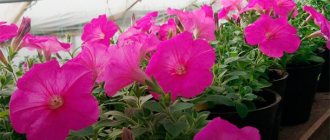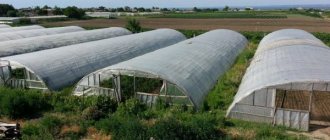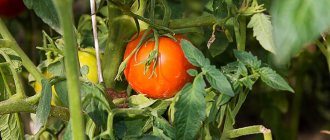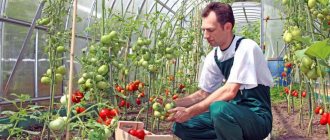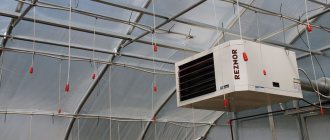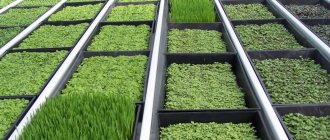Flowers are not only a decoration for our lives, appropriate for any occasion, from joyful to mournful. Flowers are also an excellent business because the demand for them is constant at any time of the year.
To satisfy this demand during the cold period, it is quite profitable to open your own enterprise for growing flowers in greenhouses. Before you start registering a business, it is advisable to familiarize yourself in detail with all the information on growing and caring for flowers, which are sometimes quite capricious, requiring certain conditions, and dying if they are not met. Such knowledge is necessary if you do not want your business to become unprofitable.
Growing flowers in a greenhouse: documents for starting a business
- Any business requires official permits to register business activities. For growing flowers in a greenhouse as a business, it is most profitable to register as an individual entrepreneurship .
- To do this, state registration and indication of the code according to the All-Russian Classifier of Types of Economic Activities (A.01.12.2) are required.
- Then you will need to decide on the desired type of taxation and the range of plants grown for sale.
Ways to increase sales
- Try to make your corner for selling seedlings noticeable, different and memorable with some catchy detail (sign, design). This will help customers find you again and promote word of mouth.
- The assortment should be rich, all plants should be arranged so that they are clearly visible. Strong seedlings in separate glasses are attractive.
- Labels, photographs, and descriptions of the variety must be included. Buyers read and ask questions. The seller must know his product and give the right advice.
- It is useful to have free containers for customers (cardboard boxes, bags). Some of them may move away from the counter only because there is nothing to wear or it is inconvenient to carry the purchase.
- Be sociable, start a dialogue with the buyer. The more people flock around your point, the more attractive it will seem to others.
What flowers are best to grow in a greenhouse?
- The correct selection of the assortment is very important, because different varieties require different conditions: humidity, lighting, temperature - all this is very important for plants.
- To optimally reduce risks, it is worth making sure that your flowers in this regard are selected in accordance with the conditions that you can provide them with.
- In addition, it is necessary to study the market conditions and understand which flowers are in greatest demand in your region and which varieties can be supplemented with the assortment.
Bright
Tulips
Tender
Queen
School
Dahlias
- Don't forget to analyze the flowers already available on the market in order to competently compete or avoid it altogether. All this is very important to take into account in order to open a business growing flowers in a greenhouse.
POSSIBLE RISKS
To assess the risk component of a greenhouse rose growing project, it is necessary to analyze external and internal factors. External factors include threats related to the economic situation in the country and sales markets. Internal – the effectiveness of organization management.
Among the internal risks are:
- Flowers are a perishable product that cannot be stored for a long time. To avoid losses, it is necessary to constantly monitor the market and forecast demand;
- errors in estimating sales volumes, which can lead to product disposal. It is possible to reduce the likelihood of this risk by creating a well-functioning product sales system;
- product quality that does not meet the stated requirements and market requirements: constant monitoring of quality and identification of deviations (non-compliance with technology or low-quality seed material) is necessary;
- errors in the growing process, on which product quality and yield depend. Constant monitoring and high-quality work of the technologist will reduce the risk.
External factors include:
- the presence of various pests that can not only spoil, but also completely destroy the flower harvest. This can be avoided by providing constant protection from pests;
- climatic conditions that complicate the process of growing flowers and incur additional costs (in the case of a cold winter - for insulating the room, in the case of a dry, hot summer - for watering). This risk is the most specific to this type of business and is almost impossible to manage. The only thing that an entrepreneur should do in this case is to have a reserve of funds in order to respond to the problem in a timely manner and eliminate it;
- high level of competition in the market. This risk can be reduced with a well-thought-out marketing strategy and achieving certain competitive advantages (due to better prices, special conditions, guarantees, additional services);
- rising prices for seed - the risk is reduced due to the margin of profitability of the enterprise. Due to the systemic nature of the problem, it is not a critical factor;
- cyclicality of the flower market and episodic demand (seasonality). It will not be possible to completely eliminate the risk, but it is possible to smooth out its impact by opening new business segments;
- termination of cooperation, entailing financial losses (reduced profits, increased costs of finding new partners, etc.) This problem may arise due to inadequate product quality, disruption of supplies, or the emergence of a competitor ready to offer more favorable conditions. One way or another, an entrepreneur must always take this risk into account and create conditions for cooperation that would be beneficial to both parties.
Evgenia Yurkina (c) www.openbusiness.ru - a portal of business plans and guides for starting a small business
13.09.2017
All materials by tag: floriculture
Calculator for calculating the profitability of this business
Net profit (monthly):
Payback period:
Profitability:
More detailed calculations can be made in our free application
Save the article to study the material carefully
Remember article
You can save this page using:
Growing flowers in a greenhouse: greenhouse parameters
- You need to start by choosing a site for growing flowers in a greenhouse. Perhaps you have your own acres, but if not, you will need to rent the land and draw up all the necessary contracts.
- The construction process itself depends on your skills and capabilities. If you can build the structure yourself, you will save a significant amount, otherwise you will have to order a ready-made greenhouse, selecting the size you need.
- The optimal size of the initial greenhouse is 4x15 m; as the business expands, further ones can be built. Experts recommend mounting a greenhouse from polycarbonate, because... Unlike film, it protects against ultraviolet penetration and is sufficiently durable.
Business
- The foundation is better strip, up to 50 cm deep, on a sand and crushed stone cushion. It is better to choose a pitched roof.
- You will also need to install climate control and heating (at your discretion and capabilities - water system, electric or solar collectors), in addition - drip irrigation.
- Thermos greenhouses are interesting, where two layers of polycarbonate have an air gap between them, and there are holes in the walls for ventilation, which contributes to more uniform heating of the greenhouse and saves up to 70% of heating and lighting costs.
Thermos greenhouse design
The main design features of such a greenhouse:
- its dimensions should not be too large, for example, dimensions of 20x5 m are perfect. If the greenhouse is larger, the same effect of the thermos will be seriously reduced;
- the roof needs to be made pitched - the sun's rays will pass through it at an angle as close as possible to a straight line, due to the fact that the roof is located almost horizontally - as a result, the interior space will warm up well;
- the building should be stretched from east to west, while the northern wall should be made opaque;
- the greenhouse coating should be two-layer - this way you will get a lot of double thermal bags.
The frame of the greenhouse can be made of wood or metal. The second option is preferable, since a metal profile made of light alloys is inexpensive and, unlike wood, does not create much darkness inside the building. The best option for creating a coating that will be installed on the frame is cellular polycarbonate . The north wall can be built from lumber, cinder blocks, or any other suitable material.
To prevent the soil from freezing in winter, the greenhouse should never be placed directly on the ground. To install it, you first need to prepare the foundation. A shallow strip structure is ideal and will easily withstand light construction.
The opaque north wall should act as a solar collector . In other words, it will accumulate solar heat and thereby warm up the interior space of the building. To achieve this, it is enough to make it black - as you know, this color warms up under the sun’s rays better than any other. The wall can be painted or black film or fabric attached to it.
If you want to further increase the efficiency of the solar collector, you can also build a system for supplying the air heated by it directly to the flower beds. This is not difficult to do - you just need to install one or more pipes, which should start near the northern wall, and then pass through the clubs.
The pipes must be bent in such a way that they cover the entire area where the plantings are located. They can be placed directly on the surface of the earth. Near the beginning of each pipe, you need to install a small fan that will drive air through the pipes from the collector to the plantings.
Video: what a thermos greenhouse looks like
How to make money growing flowers in a greenhouse all year round
If you plan to grow flowers in a greenhouse year-round, you should make sure that it is solid. As already mentioned, it is better to start with small areas, with a plan for their expansion in the future.
The standard requirements for a greenhouse intended for year-round use are the following:
- The coating must be made of polycarbonate or glass.
- The base is on concrete, brick or foam blocks with mandatory waterproofing.
- The frame is made of metal (in extreme cases, wooden).
- The roof is strong enough, single or gable, so that snow does not linger in winter and is easy to clean off.
- Artificial lighting equipment is mandatory since during certain periods of plant growth it will require almost round-the-clock illumination.
- A necessary component of a year-round greenhouse is heating and artificial lighting.
- Installation of a regular watering system and climate control.
Products made from stabilized moss
One of the biggest trends in interior design is the use of stabilized moss. With it, so-called phytowalls and panels are created to order, living paintings and tabletop design compositions are made, and used to make watches and three-dimensional letters. For the client, stabilized or sleepy moss is convenient because it does not require watering and maintenance, and for the entrepreneur, it is possible to grow it with your own hands, because recipes for the composition of the mixture for growing are easy to find on the Internet.
As long as stabilized moss is treated as an amazing novelty and the “wow” effect is triggered, a high markup can be made for products made from it. It looks natural, feels soft and elastic to the touch, and in addition can have different colors, which expands the boundaries of creativity. Cladonia deer (that is the name of the moss used), in addition to natural green and gray shades, can be decorated with natural dyes and have pink, blue, orange and purple colors.
Stabilized moss can retain its appearance and aroma for 5 to 15 years. Deer Cladonia takes all its moisture from the air. Optimal humidity conditions are 40-60%. You can start a business using stabilized moss with simple paintings and small compositions, and over time move on to more complex and large-scale projects and wall graffiti and panels. What’s especially nice about this business is that even when competitors appear, you can always find your own trick.
Which covering to choose for growing flowers in a greenhouse?
You can choose a coating for growing flowers in a greenhouse, focusing on the climatic conditions of your region, aesthetic indicators and, of course, solvency:
- Film coating is the least expensive, the simplest to equip and operate, easily ventilated and just as easily dismantled if necessary. Disadvantages include the need for fairly frequent replacement, risks of damage, and unsuitability for winter. Recently, reinforced film has been used more often - it is stronger and more durable.
- The glass coating is excellent for providing light transparency. It has low reflectivity, is easy to use and maintain, and is quite environmentally friendly. But among the disadvantages is the heaviness of the coating and at the same time its fragility, which creates the risk of damage and destruction. To create a “thermos” effect, you can use a double layer of glass - this option is appropriate in cold regions.
- The polycarbonate coating is slightly inferior to glass in transparency, but superior in thermal insulation. Being a flexible and fairly durable material, polycarbonate is resistant to ultraviolet radiation (which requires a special coating), fire, and temperature changes. Disadvantages include susceptibility to active thermal expansion, the possibility of damage during hail, and instability to abrasive materials.
It is important to choose a coating
Growing Lithops
Succulents and cacti are large categories, so it may be a little easier for you to specialize in a narrower niche. For example, on lithops. Lithops is a genus of succulents from the Aizaceae family, with more than 30 species. Due to their appearance and mimicry abilities, they are called living or blooming stones. Since lithops come from arid regions of the planet, where there is less than 50 mm of precipitation per year, they are unpretentious in watering and care, so they are perfect for growing at home. The main thing they need is to provide enough light. In the first half of the day they need 4-5 hours of direct sunlight, and in the second half there will be light partial shade.
Lithops themselves look very Instagrammable, so to sell them well, you definitely need to pay attention to the quality of the photos. Macro photography and the ability to create unusual compositions are especially important here. Since these are collective plants, it is better to plant them together - individually they begin to wither. Lithops begin to bloom at the age of 3-5; this usually occurs no earlier than mid-August.
Purchase of planting material for growing flowers in a greenhouse
- When you study supply and demand and decide on the nuances of growing flowers in a greenhouse, purchase planting material - bulbs or seedlings. It is very important to immediately purchase high-quality bulbs, not only your “harvest” depends on this, but also the further growth and development of plants. So don't save, but choose the best.
- To do this, contact only trusted, reputable agricultural companies in your region, in which the varieties are selected and adapted to the existing natural and climatic conditions. In the future, you can grow seedlings yourself by planting them in pots.
- You can learn how to care for plants from specialized literature or by attending specialized courses and master classes.
Important
Legal registration
Growing seedlings does not require large areas. You can do this in your own garden or summer cottage. Selling surplus products grown on such land is not considered a business activity, so the business does not need to be registered legally. To rent a place in the market, it will be enough to stock up on a certificate stating that you have a plot of land on which you grow vegetables.
If the status of individual entrepreneur already exists for other reasons, you can add the following types of activities from the directory “OK 029-2014 (KDEC Rev. 2):
- 01.3 - growing seedlings;
- 01.30 - growing plants, tubers, shoots, seedlings (production of all planting materials).
If you intend to hand over seedlings to gardening stores, you will need to register as an individual entrepreneur. By the way, this may also be required if “good” neighbors report to the tax office that you are growing seedlings and selling them on an ongoing basis. In this case, you can earn a fine for illegal business activities (2.5 thousand rubles).
How to prepare the soil for growing flowers in a greenhouse?
- to start preparing the soil for growing flowers in a greenhouse in the spring. With the first warm weather, dig up a layer of soil up to 10 cm deep in a meadow or in an area near a forest and lay it at home, covering it with transparent polyethylene and watering it abundantly.
- Thus, as a result of the combustion process in the soil, all remaining pests and weeds will be destroyed. Make this soil the basis of your greenhouse in the fall.
- You can, of course, buy ready-made soil, but taking into account the fact that the expected area is quite large, this is quite a significant amount for a start-up investment. Further, as you develop and make a profit, you can switch to the option of purchasing a ready-made soil layer.
- The interior arrangement of the greenhouse comes down to the formation of beds, passages, installation of racks and shelves. It is advisable to map out the placement of plants and flowers in advance, which will facilitate a more harmonious layout on site.
Sale of compositions with tillandsias
Atmospheric tillandsias are exotic plants that do not require soil to take root, absorbing everything they need from the air. In this regard, amazingly beautiful compositions are created with tillandsias on stones, wooden stands and driftwood. Such compositions are sometimes made hanging or placed in florariums - the result is a rather unusual decorative element that will not leave anyone indifferent.
For tillandsias, one of the most important factors is the level of air humidity, which can be 60-65% or more. After flowering, the children are attached to driftwood, branches, pieces of wood or felt, placed on a pad of moss or coconut fibers and secured with wire or an elastic band. Naturally, the material should not be processed in any way, for example, with varnish or paint, and the presence of bark on the wood is desirable.
Naturally, the more unique a composition with tillandsia looks, the more expensive it can be sold. You can complement your work with unusual stones, shells and shells, branches, a wooden frame, and so on.
How to properly plant flowers in a greenhouse?
- As a rule, when growing flowers in a greenhouse, the beds are arranged quite high, with parallel rows allocated for each species, and separating the species with partitions. You can place flowers floor by floor by building shelves and racks.
- The general rule is to place tall specimens on the north side, and low ones on the south. And a few more “laws”: pots with hanging flowers should hang above the height of a person, climbing plants should be able to spread their stems, for which they pull twines, wires, etc.
- If you attach a plant in a flower pot to the frame, make sure that the brackets are fastened firmly and securely.
Simple and profitable business
More than half of summer residents prefer to buy ready-made seedlings instead of growing them on the windowsill in a small apartment. At first glance, one root costs little; for example, tomatoes cost an average of 25–35 rubles. However, a pack of tomato seeds costs about the same, of which there are also up to 30 pieces or more. Thus, the income from the sale of seedlings will be more than 1,000 rubles. Not a bad profitability!
Approximately the same cost ratio will be when growing other, most popular vegetable crops and annual flowers. This is especially beneficial in cities with a population of 500 thousand people or more, where multi-storey buildings predominate. To grow seedlings, you need to have your own (rented) garden plot or summer cottage with good access in winter and the ability to equip greenhouses.
Earning money from growing flowers in a greenhouse: implementation
The sale of flowers grown in a greenhouse is complicated by the fact that they have a marketable appearance for a very short time, so an ill-thought-out sales method is fraught with capital losses that can ruin your business. Therefore, even before you start growing flowers, take care of how you will sell them.
- Own flower kiosk or shop. This will also include the cost of renting a MAF or premises that need to be located in a crowded place. In addition, you need to familiarize yourself with the pricing policies of possible competitors so as not to lose to them.
- Selling in wholesale quantities is a convenient way to sell, which requires concluding agreements with large flower shops.
- Home delivery. This online scheme is very popular today and is readily used by those who cannot personally go to the birthday person or other celebration. To do this, you need to create your own store on the Internet, present the products offered in it in detail and indicate how you can place an order.
- Seasonal sale option , when mass quantities are grown for certain holidays.
- Selling locally is an opportunity for the client to choose his own flowers from those growing in the greenhouse.
Sales
It should be noted that wholesale sales are less profitable, since the prices here are also wholesale, and therefore lower. And they become more profitable with a constant large sales market.
SALES AND MARKETING
The peculiarity of the rose growing business is that the target audience is not the final consumer, but wholesale buyers, product distributors, represented by various flower stalls and florist shops. At the same time, the advertising strategy must take into account the requirements of the end consumer in order to plan production and predict sales volumes. Portrait of the final consumer of the product: city population aged 20 to 50 years with an average income level.
Thus, the project’s marketing policy covers both the assessment of end consumers and promotion methods among flower retailers. Advertising is aimed at establishing long-term cooperation and developing a client base.
The most profitable way to sell finished products is wholesale sales to large flower shops and markets. However, it will be quite difficult for a novice entrepreneur to immediately create sales channels.
To do this you will need:
- analyze the competitive environment, assess the level of demand for products, develop your competitive advantages;
- conduct a price analysis of the market and offer more favorable conditions as a supplier: lower costs, a flexible system of discounts for wholesale buyers, guarantees, etc.;
- release a catalog of finished products on paper and on the Internet. Generate a list of potential buyers and send out commercial offers.
The advertising budget is 40,000 rubles and consists of the following types of costs:
- marketing analysis of the local sales market – 15,000 rubles;
- creating a catalog and printing promotional material (including business cards) – 15,000 rubles;
- Direct marketing is a way to increase sales by sending commercial letters to potential customers.
Effective direct marketing is ensured by narrowing the target audience and sending high-quality mailing messages that may be of interest to the client. This same group of expenses includes the costs of online promotion, call promotion and transportation costs - 10,000 rubles.
It should be noted that searching for new customers and developing sales markets is a constant process, so a sales specialist is needed to carry out this function. His responsibilities will include attracting clients and working with them, as well as advertising support for the project and analyzing the effectiveness of using the advertising budget.
The competitiveness of the project is ensured due to the high quality of products. In all promotional events, attention is focused on the advantages of purchasing goods from a domestic manufacturer (savings on transportation costs, lower prices, reduced risk of supply disruptions, guarantees, a flexible system of discounts, high quality products, which is achieved by reducing delivery times).
When planning sales volumes, production capacity should be taken into account, since the maximum production volume depends on the area of greenhouses, varieties of roses and their yield, as well as the conditions in which the flowers will be grown. The maximum production volume is calculated based on the greenhouse area - 50 square meters. m., which houses about 200 rose bushes, and an average annual flower yield of 250 flowers per bush. In total, the yield of the flower greenhouse will be: 200 * 250 = 50,000 cuts per year, and about 4,166 cuts per month. This indicator should be taken into account when planning sales volume.
Demand for products is seasonal. Sales peak during the holiday months: February, March, May June, September, December. The planned sales volume is calculated based on the sale of 100% of the harvest at the average market (wholesale) price of 60 rubles/piece. To simplify calculations, average indicators for sales volume and price of different varieties of roses are used. The minimum price for 1 rose is 45 rubles/piece, the maximum is 75 rubles/piece.
Thus, the average revenue will be about 250,000 rubles per month. In this business plan, it is planned to reach the declared sales volume in the third month of work.
Table 4. Planned sales volume
| Product | Average planned sales volume, pcs./month. | Average price per piece, rub. | Revenue, rub. | |
| 1 | Rose cut | 4166 | 60 | 960 |
How to make money growing flowers in a greenhouse: additional income
- Start selling related products along with growing flowers in a greenhouse: seeds and fertilizers, seedlings and chemical protection products, etc. This way, clients will know that they can buy from you not only a beautiful bouquet, but also provide it with a “long life”, while also providing care for indoor plants.
You can sell flowers not only in bouquets, but also in the form of seedlings. It is advantageous in that its lifespan is much longer. In addition, seedlings can be grown in open ground, which reduces the number of additional greenhouses. Another advantage is that seedlings, as a rule, are sold in large quantities.
- And if you have time, desire and opportunity , you can supplement your sales volume with indoor flowers in flowerpots. You can do this even in an apartment, the main thing is to find your own zest and those varieties that will definitely interest potential buyers.
Rare plant cuttings
For those gardeners who have a large collection of plants at home, especially rare ones, it would be a sin not to sell rooted cuttings. For example, on ad sites you can sometimes find cuttings of rare species of philodendrons costing more than 100 thousand rubles! Of course, the sale of such options seems like a happy occasion, but there are a lot of mid-price plants, and some manage to make money on the most ordinary house flowers like tradescantia. Since Tradescantia takes root well and quickly produces new shoots, even by regularly selling cups with cuttings for 100 rubles, you can earn something.
How to advertise yourself and your greenhouse flower growing business
To attract as many clients as possible in the business of growing flowers in a greenhouse, follow a few simple but always working rules:
- Make yourself known. Place advertisements in newspapers, on television, communicate in relevant specialized groups and communities on social networks, and on forums.
- Spare no expense in creating a catalog of your products ; it is especially convenient to do this online, where you can quickly update and correct information.
- When selling a product to a buyer, accompany the purchase with brief information on how to care for a plant or how to extend the life of a bouquet. Accompany all purchases with a business card from your store (business).
Growing Succulents
Succulents are a good option for a small home-based business. Succulents are unpretentious, do not take up much space, and can easily do without water for a whole month, making them convenient to deliver by mail over long distances. You can start growing succulents at home by equipping a corner of the house or room as a greenhouse, and in the future, equipping a greenhouse.
Despite all the advantages, succulents grow for quite a long time, and for small sizes, even visually, the buyer is not willing to pay dearly. Therefore, the more teenage succulents you have, the better, and flower arrangements can help sell them at a higher price. You can sell through Instagram, filling your account with interesting content on the topic and using paid promotion methods offered by this social network. Succulents, like most indoor plants, sell best in the spring and fall; sales decline is observed in the summer during the holiday period.
Business plan: growing flowers in a greenhouse
A mandatory investment is the construction and equipment of the greenhouse itself, the purchase of the necessary garden tools (shovels, watering cans, rakes, hoses, etc.), the purchase of the required number of flowers (bulbs, seedlings, seeds) and chemicals with which you will feed the plants and treat them against diseases and pests.
The approximate costs for starting your business are:
- Up to $4000 – for the construction of a foundation, greenhouse frame, installation of a heating system.
- $500 — carry out, install and launch the irrigation system.
- $300 – approximately this amount will be needed each month to pay utility costs.
- $1500 – purchase the required amount of planting material.
- About $50 will be needed for fertilizers and protective equipment.
- About $300 is needed to pay taxes and other expenses that arise in the process.
Thus, if you count in dollars (and this is appropriate to do in conditions of currency exchange rate fluctuations), then starting a business for growing flowers in greenhouses will cost within $665 -7000.
Growing cacti
A special category of succulents that is familiar to everyone is cacti. Cacti are not just sticks and balls with needles, they are a huge variety of plant species, sometimes completely different from each other. Thanks to the hardiness and unpretentiousness of cacti, they are perfect for indoor plant growing: you can either sell the surplus from your own collection or grow for sale. Russian entrepreneurs have long learned to send cacti by mail in such a way that they do not spoil or rot along the way - you can see packaging techniques in blogs on YouTube.
It takes on average about six months to grow a cactus to an adult that can bloom. The cost will depend on the type, but usually it is 300-2000 rubles or more. Flowering cacti usually cost twice as much. The disadvantages of growing cacti are growing competition, the abundance of cheap products in large chains with garden centers such as Ikea, the great influence of the population’s ability to pay (people are in no hurry to please themselves with cacti during crises and pandemics), the difficulties of expansion in the Russian climate - if you plan to build greenhouses, then you will have to spend a lot on heating systems and utilities.
What is the profitability of growing flowers in a greenhouse?
- Growing flowers in a greenhouse itself is quite profitable - predicted values sometimes reach 300% . Although, as practice shows, depending on various conditions, including force majeure, profitability can fluctuate between 50-70%.
- If we speak in monetary terms, then, provided that only roses are grown, the annual profit can reach an amount within $25000 — $33000.
You can grow any flowers.
A decrease in profit can be due to various factors: unaccounted for or increased competition, weather conditions when heating costs increase, death of flowers, etc. On average, the funds spent on starting a business for growing flowers in a greenhouse pays off in less than a year - 6-8 months.
Growing indoor palm trees
Palm trees are a very popular home decor item. Typically, palm trees are distinguished by the shape of their leaves - into fan palms (for example, Washingtonia, Livistona and others) and feather palms (coconut, date, Howea, Hamedorea, etc.). Palm trees decorate not only apartments, but also offices, halls of business centers and shopping malls.
Due to their size and appearance, palm trees can be expensive, but don’t think that you can make money quickly and easily. Especially if you decide to buy seeds or several palm sprouts to grow in your apartment as a kind of contribution or “passive income”. Sometimes, even after 5 years, the height of a palm tree can only reach about a meter and a half. For example, such versions of date palms on ad sites are sold for only 500-2000 rubles, and larger specimens 10-15 years old will cost about 5-10 thousand rubles.
Ways of implementation
As mentioned above, in order for this business to bring good profits, you need to find a sales market for yourself. Of course, you don’t have to think about wholesale supplies at first, but your own flower salon will be a good help so as not to give flowers to resellers for next to nothing.
Over time, you can expand your business and supplement the store’s assortment with planting material and related products for floristry. It’s worth creating your own website for advertising, as well as for additional sales.

